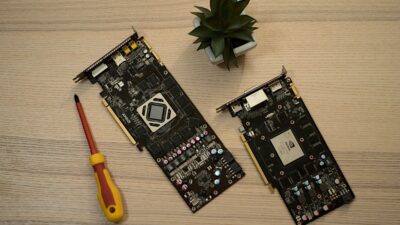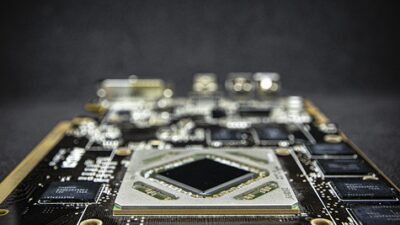Beyond Gaming: How Nvidia is Empowering AI Innovations
In recent years, Nvidia has transcended its roots as a graphics processing unit (GPU) manufacturer primarily catering to the gaming industry. Today, the company stands at the forefront of transformative technologies, utilizing its powerful hardware and cutting-edge software to drive innovations across artificial intelligence (AI), data science, and deep learning. This article explores how Nvidia is reshaping industries beyond gaming and empowering AI innovation worldwide.
The Shift from Gaming to AI
Nvidia’s journey began with the development of GPUs that significantly enhanced gaming experiences by delivering high-quality graphics at exceptional speeds. However, as the demand for AI and machine learning surged, the company recognized the potential to repurpose its technology for broader applications.
GPUs are uniquely suited for parallel processing, making them ideal for the complex computations required in AI algorithms. This realization prompted Nvidia to pivot its focus towards creating specialized hardware and software tailored for AI applications, thus fostering a thriving ecosystem that’s reshaping industries.
Leader in AI Hardware
At the heart of Nvidia’s impact on AI is its range of GPUs, which are specifically designed for deep learning tasks. The latest architectures, like the Ampere and Hopper, provide immense computational power, enabling researchers and companies to train massive AI models more efficiently than ever before.
Nvidia’s Tensor Cores, integrated into its GPUs, allow for mixed-precision computing, which optimizes the training process without sacrificing accuracy. This power is crucial for initiatives ranging from natural language processing to computer vision, reinforcing Nvidia’s dominance in the AI hardware landscape.
Software Innovations: The Nvidia AI Ecosystem
Nvidia is not just about hardware; it invests heavily in software development to create a comprehensive AI ecosystem. Platforms such as CUDA, TensorRT, and the Nvidia Deep Learning SDK equip developers with the necessary tools to harness the full potential of their GPUs.
One of the standout platforms is Nvidia Omniverse, a real-time 3D design collaboration platform that leverages AI to simulate realistic environments. Omniverse allows creators, designers, and engineers to collaborate seamlessly, enhancing workflows in industries such as gaming, architecture, and film.
Moreover, Nvidia’s Maxine platform uses AI to enhance video conferencing experiences by improving audio quality, enabling virtual backgrounds, and even adding facial animations to avatars. Such innovations demonstrate how Nvidia is expanding the scope of AI applications beyond traditional fields.
Empowering Industries
Nvidia’s influence extends across various sectors, including healthcare, automotive, and robotics.
-
Healthcare: AI technologies powered by Nvidia’s GPUs are revolutionizing diagnostics, enabling faster and more accurate interpretation of medical imaging. For instance, AI algorithms can analyze radiology scans and identify anomalies with precision, assisting doctors in making informed decisions.
-
Automotive: The rise of autonomous vehicles relies heavily on AI and deep learning. Nvidia’s Drive platform provides the necessary computing power for real-time processing of sensor data, facilitating developments in self-driving technology. Its partnerships with leading automotive manufacturers are paving the way for safer, smarter vehicles.
- Robotics: In robotics, Nvidia’s advancements in AI are enhancing machine perception and decision-making. Combined with simulation tools like Isaac Sim, Nvidia is equipping developers with the resources to create, train, and deploy intelligent robotic systems capable of operating autonomously in complex environments.
The Future of AI Innovations
As industries continue to evolve, Nvidia remains committed to pushing the boundaries of what AI can achieve. With ongoing investments in research and development, the company is exploring new frontiers, such as quantum computing and neuromorphic chips, which promise to further accelerate AI capabilities.
Furthermore, Nvidia’s collaboration with academic institutions and startups fosters innovation and accelerates the pace at which AI technologies are developed and brought to market. Through initiatives like the Nvidia Inception program, promising startups receive support and resources to grow and implement AI solutions across various sectors.
Conclusion
Nvidia’s evolution from a gaming hardware company to a powerhouse of AI innovation underscores the versatility and potential of its technology. By harnessing the power of GPUs and developing robust software ecosystems, Nvidia is empowering a diverse array of industries to leverage AI for transformative results. As the company continues to pave the way for advancements in AI, the possibilities for innovation are boundless, promising a future where cutting-edge technologies enhance our everyday lives in unprecedented ways.



